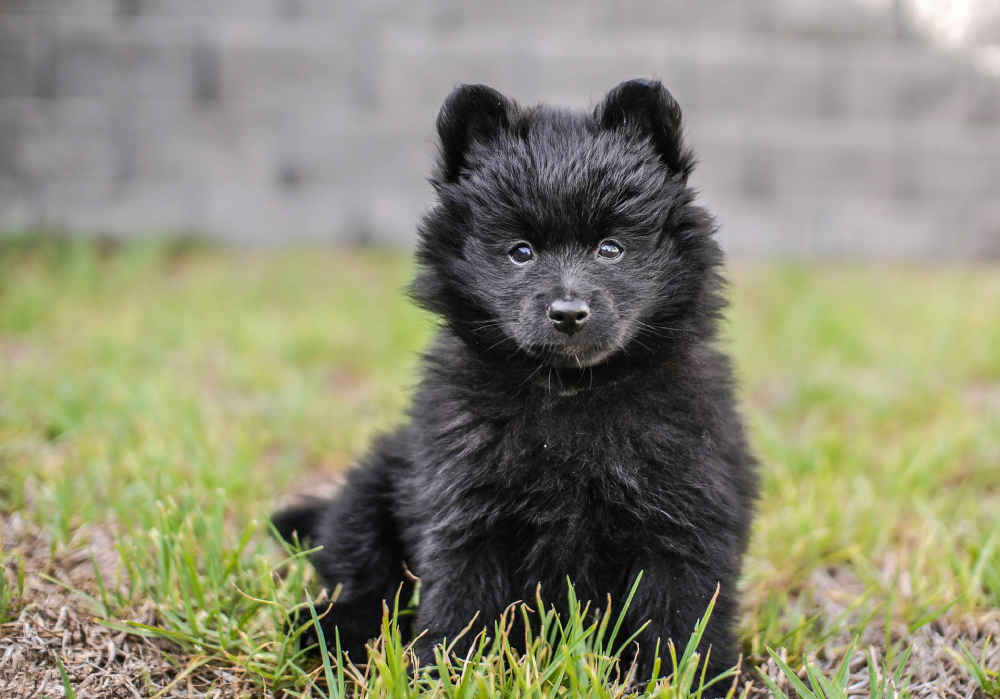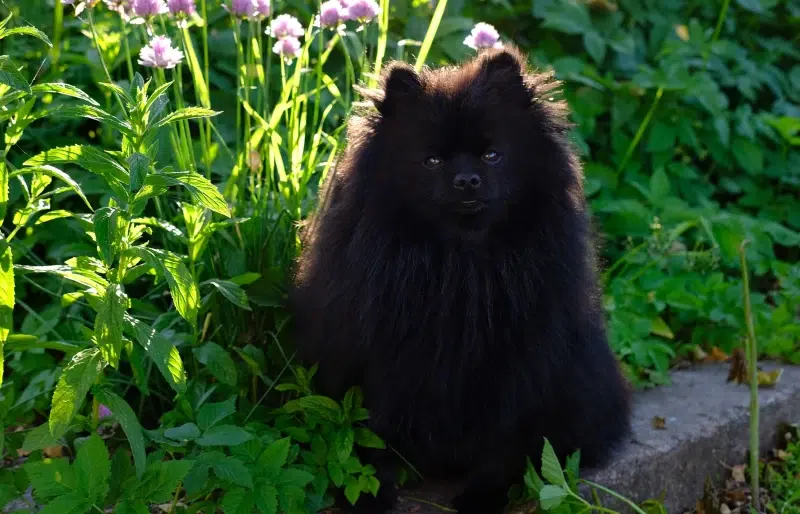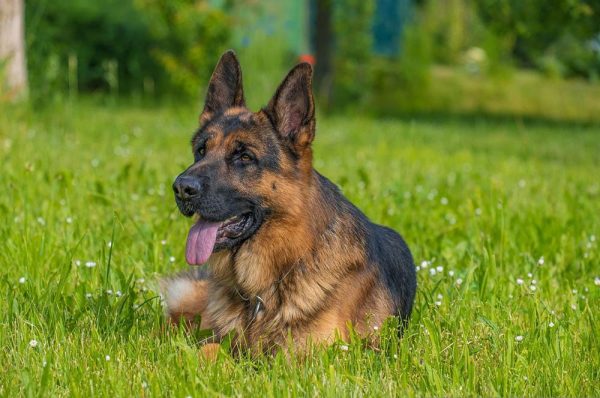Pomeranians are not only one of the most adorable and loved breeds around, but they have a very diverse range of coat colors. Black is one of the most desired variations, and although its color is the only differentiation, it is one of the rarest variants of Pomeranian.
This article will examine the black Pomeranian’s history, how it rose in popularity, and how it is formally recognized. We’ll also touch on how this tiny pet makes up for its size with its oversized personality.
Breed Overview
Height:
8—11 inches
Weight:
3—7 pounds
Lifespan:
12—16 years
Colors:
Black
Suitable for:
Singles, families with kids, and those that need therapy dogs
Temperament:
Intelligent, alert, active, friendly, loyal, playful, feisty
The black Pomeranian is a rare breed, but it was common when first discovered. With increased breeding, the black Pomeranian became rarer while other variants, such as orange and cream, became more popular. The most certain way to create a Black Pomeranian is to breed two black Poms together.
However, although they are still possible to breed, it is very difficult because it is hard to get a pure black variant, and often other colors can be found in the coat. Some puppies will appear to have black fur, but it will lighten as they grow.
Furthermore, you can also find black Pomeranians with tan markings, but they are not considered true black Pomeranians.
Black Pomeranian Breed Characteristics

The Earliest Records of Black Pomeranians in History
The Pomeranian originated from Pomerania in Northeastern Europe and was bred from Spitz ancestors as sled dogs. The Spitz dogs are a breed of dog that possess wolf-like qualities. They were much bigger as they were used for herding, guarding, and pulling sleds. The Pomeranian eventually became a favorite of royalty.
Queen Victoria was a big fan of Pomeranians, and she could be the reason that they are the toy breed they are today. She bred several varieties of Poms, and the Spitz influence became less pronounced as the breed’s size was reduced.

How the Black Pomeranian Gained Popularity
The black Pomeranian specifically was very popular in the early years of its breed, but other colors, like orange, became more popular, causing a decline in the black coat’s popularity. Because of Queen Victoria’s popularity as the monarch, the Pomeranian breed grew popular.
Early in the breed’s development, Kennel Club Pomeranian producers crossed many true black Pomeranian females with other colors to produce the sable pattern. The white and black Pomeranians no longer held top positions in breeding programs and the show arena because other coats, such as orange, chocolate, and blue, became more common.
Formal Recognition of the Black Pomeranian
The American Kennel Club (AKC) recognized the Black Pomeranian in 1900, and the American Pomeranian Club (APC) was formed and accepted as a member of the AKC in 1909. The APC became the official parent club for the breed, and they held their first specialty show in 1911.
The American Canine Registry, the United Kennel Club, the North American Purebred Registry, the Canadian Kennel Club, and the Australian National Kennel Club also acknowledge them.

Top 4 Unique Facts About the Black Pomeranian
1. A True Black Pomeranian Does Not Include Other Coat Colors
A true black Pomeranian is all black. Even the nose, lips, and paw pads are pigmented. A black and tan and tricolor coat includes white, but they are not true black Pomeranians. Two black parents must be bred together to achieve a solid black coat, but the result cannot be guaranteed.

2. Exposure to Light Can Lighten Its Coat
If a black Pomeranian is exposed to too much sunlight, it can bleach its coat, resulting in reddish-brown fur. It is recommended to keep them out of the sunlight if you wish to maintain their coal-black coat.
3. Black Pomeranians are One of the Original Breed Colors
The breed’s earliest coats were typically white, brown, or black. Queen Victoria had a small red Pomeranian in 1888, and by the end of the 19th century, the coat color had gained popularity, making black less common.
4. Black Pomeranians are Rare
Although black Pomeranians were one of the first breed colors, they are one of the rarer colors available today and one of the most expensive. They were popular in the early years, but other colors became popular and are still more popular today.

Does the Black Pomeranian Make a Good Pet?
Pomeranians make great pets for people looking for a small but active companion. As small as they are, they have loads of energy and require an owner who’s willing to provide plenty of exercise. They are playful throughout most of their lives but are also happy to relax on the couch or the lap of their owner.
They are a popular and much-loved toy breed because of their loyalty, high intelligence, big personalities, and of course, their adorable looks. They are great with children, although small children need to be cautious around this tiny breed because of its size, and they will happily get along with other pets as long as they are socialized.
Pomeranians also make excellent therapy and emotional support dogs if that is something you are looking for in a pet. Black Pomeranians are an adorable and loving breed, and they bring any family, senior, or single several years of love and companionship.

In Conclusion
The black Pomeranian was one of the original breed colors. They were popular a few hundred years ago and are still cherished today. They were bred from arctic snow dogs and were adored by royalty, and you can still acknowledge the regal qualities in their temperament today.
The black Pom is recognized by the AKC, as are all coat colors of this breed. These sweet toy breeds make up for the lack in size with their prominent, lovable personalities and high energy, making them great family pets.
Featured Image Credit: Lisjatina, Shutterstock



















